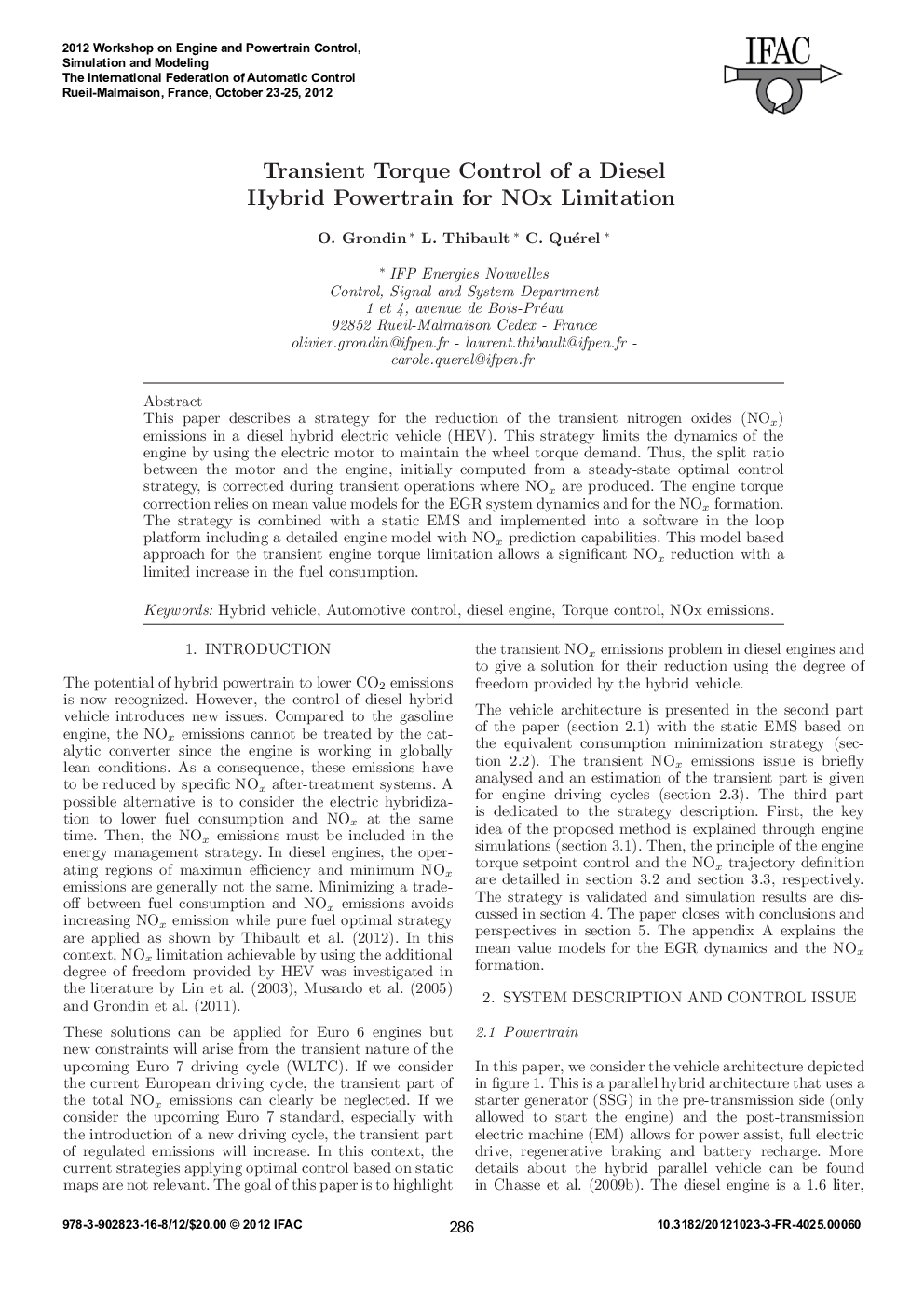| Article ID | Journal | Published Year | Pages | File Type |
|---|---|---|---|---|
| 713828 | IFAC Proceedings Volumes | 2012 | 10 Pages |
This paper describes a strategy for the reduction of the transient nitrogen oxides (NOx) emissions in a diesel hybrid electric vehicle (HEV). This strategy limits the dynamics of the engine by using the electric motor to maintain the wheel torque demand. Thus, the split ratio between the motor and the engine, initially computed from a steady-state optimal control strategy, is corrected during transient operations where NOx are produced. The engine torque correction relies on mean value models for the EGR system dynamics and for the NOx formation. The strategy is combined with a static EMS and implemented into a software in the loop platform including a detailed engine model with NOx prediction capabilities. This model based approach for the transient engine torque limitation allows a significant NOx reduction with a limited increase in the fuel consumption.
